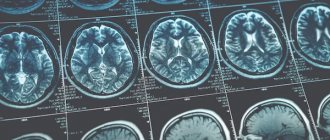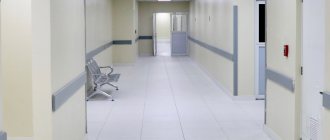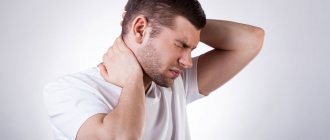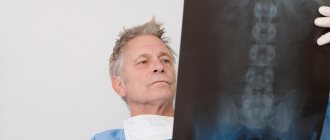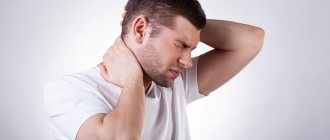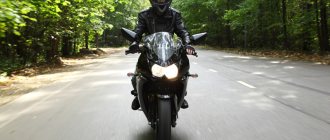Among all tumors in the central nervous system, spinal cord lesions account for approximately 12% in adults and about 5% in children. What is the cause of these pathologies and how are they treated?
ALENA PARETSKAYA
Pathophysiologist, immunologist, member of the St. Petersburg Society of Pathophysiologists ALEXANDER SERYAKOV MD, professor, oncologist, hematologist, radiologist (radiation therapist) of the highest category, leading oncologist of the SM-Clinic holding »
Most often, tumors localized in the spinal cord are detected in people aged 30 to 50 years. Mostly, in about 85% of cases, they affect the membranes of the brain and surrounding structures.
What is a spinal cord tumor
“Spinal cord tumors,” says oncologist Alexander Seryakov, “are pathological neoplasms of a malignant and benign nature that are localized in the spinal cord.
They are rare. By location there are:
- intramedullary (18 - 20% of cases) - grow inside the spinal cord;
- extramedullary (80 - 82% of cases) - located near the spinal cord, developing from nearby tissues.
Among benign lesions, the most common are ependymoma (63%) and astrocytoma (30%). Much less common are non-malignant hemangioblastoma and malignant oligodendroglioma.
Causes
Spinal cord damage can be caused by congenital anomalies, various diseases and injuries of the spine. The latter include fractures, bruises, compression, dislocations, and concussions, accompanied by varying degrees of damage to tissue integrity. Injuries can occur as a result of a car accident, a fall, or receiving a perpendicular blow to the back (bullet wound, knife wound, blunt trauma).
The most dangerous is a rupture of the spinal cord. It is subject to long-term treatment and restoration of impaired functions. However, you must be prepared for the fact that with such an injury it is very difficult to fully recover, and in some cases, resuming the work of some organs and systems is not possible. In such a situation, psychologists at the Yusupov Hospital help the patient adapt to new living conditions.
Causes of spinal cord tumors in adults
The true causes of tumor growth that occurs in the spinal cord have not been determined to date. Scientists have identified a number of risk factors that may increase the likelihood of tumor growth in children or adults, but definitely do not lead to the formation of pathology. These include:
- hereditary predisposition (features of genes passed on from parents to children);
- exposure to substances with carcinogenic effects (chemical dyes, petroleum products);
- development of lymphoma (this is a malignant lesion in the lymphatic system);
- the presence of Hippel-Landau disease (a tendency to grow tumors, both benign and cancerous, is inherited);
- development of neurofibromatosis type 2 (this is a disease associated with gene breakdowns in which multiple tumors are formed - schwannomas or meningiomas in the area of nerves and the nervous system);
- exposure to harmful environmental factors (chemical pollution, radiation exposure);
- maintaining an unhealthy lifestyle - smoking, drinking alcohol, poor nutrition;
- constant stress;
- a sharp decrease in immunity;
- Excessive tanning (in a solarium, on the beach).
Often several factors influence at once and special conditions must be created for the tumor to begin to grow.
What is the essence of radicular syndrome?
As we have found out, the spinal nerve contains sensory and motor fibers. Therefore, if something puts pressure on the nerve, for example, a herniated disc, then this will affect both the sensory and motor areas. Loss of sensitivity will manifest itself as numbness, burning, pins and needles, pins and needles and severe pain. And in the motor sphere, muscles will weaken, their tone and reflexes will decrease. By the way, the sensations with radicular syndrome are exactly reminiscent of those that occur if you “oversit” your leg. The leg becomes weak and seems to collapse when you try to stand on it; it goes numb and pricks with needles. Only with radicular syndrome, these sensations are much stronger and, unlike an “overexposed” leg, they do not go away on their own, but require urgent treatment.
With radicular syndrome, in addition to pain and numbness, muscle weakening always occurs.
Symptoms of a spinal cord tumor in adults
There are no typical or characteristic symptoms only for a tumor; all signs can mimic other diseases, especially in the early stages.
Therefore, you should consult a doctor to determine or rule out the problem with the following complaints. Pain syndrome. The most common manifestation of a tumor is pain that occurs in the area of the spine where the tumor began to grow. In the early stage, the pain may be mild or more severe, but there are no significant neurological symptoms. As the tumor progresses, disturbances in sensitivity and movement occur, the pain becomes stronger against the background of coughing or sudden movements, sneezing, physical activity, at night and when moving, tilting the head.
Movement disorders. Muscle weakness is also possible, which occurs in combination with sensitivity disorders, the phenomenon of muscle atrophy, sharp and sudden contractions, twitching of muscle groups that are relaxed.
Sensitivity disorders. Sometimes there is no pain, but superficial sensitivity may suffer, while maintaining a deep tactile sense. The patient may not feel pain, temperature, or touch, but perceives pressure and vibration.
Problems with the functioning of the sphincters. Possible disturbances in urinary functions and, less commonly, bowel movements. This leads to retention of urine or stool.
Also, as the process progresses, scoliosis of the spine may occur, which is formed due to pain, motor dysfunction or destruction of the vertebral bodies.
It is impossible to identify spinal cord tumors externally; they are located quite deep in the spinal canal.
Consequences
A spinal fracture with damage to the spinal cord leads to serious consequences for the body. Their severity will depend on the extent of tissue damage, the timeliness and quality of treatment measures. Minor injuries damage peripheral nerve cells. Their work can be taken over by healthy neurons. In this case, the consequences will be minor.
If deeper layers of the spinal cord are affected, the consequences can be catastrophic. The patient may die or remain disabled. The brain completely loses connection with the body below the area of spinal cord injury, which leads to complete loss of sensitivity in this area and immobilization.
After a severe spinal injury, a person experiences a state of shock that puts him into a coma. This is the body’s protective reaction to damage that has occurred. Spinal shock can last from several days to several weeks. At this time, all organs and systems (except for the heart and lungs) do not work correctly, so it is impossible to check reflexes and determine the full picture of damage. Muscles atrophy during a comatose state, so rehabilitation clinic specialists maintain their tone with massage, gymnastic exercises and electrical impulses.
The most serious consequences of spinal cord injury include:
- Paralysis of the whole body or individual parts;
- Difficulty with digestion and bowel movements;
- Deep vein thrombosis;
- Bedsores;
- Muscle spasticity;
- Impaired lung function (breathing problems.)
Long-term consequences of spinal cord injury can occur with inadequate rehabilitation. Therefore, it is very important to complete the full course of treatment and take preventive measures to maintain the functioning of the body.
Classification of spinal cord tumors in adults
There are many options for classifying tumors localized in the spinal cord.
It is possible to divide into groups according to a number of characteristics - the location of the tumor focus relative to the spinal cord, spine or meninges, features of the histological picture, as well as the specific location of the lesion. If we divide tumors by origin, they can be classified into two groups:
- primary is tumor tissue that developed from the cells of the spinal cord itself, its roots or membranes;
- secondary are tumors of a different localization that affect the spinal cord (including metastatic ones).
Based on the location of the tumor, they can be divided into several groups:
- extradural tumor - a lesion above the area of the dura mater;
- intradural – tumor under the dura mater;
- intramedullary - grows inside the spinal cord, originating from its cells.
Tumors can be located behind the spinal cord, in front, on the sides, affecting the cervical or thoracic, lumbar or sacral regions.
There is a very wide classification based on the origin and type of cells; tumors are determined based on biopsy data.
How is the spinal nerve structured?
The root is the initial and very short section of the nerve that leaves the spinal cord, but is located inside the spine. There, inside the spine, roots of two different types are connected to each other and form the spinal nerve, which, in fact, exits the spine.
Spine. Cross section
The root, like the rest of the nerve, consists of many nerve fibers collected in a bundle, like a stranded wire. There are posterior and anterior roots. The dorsal roots consist of sensory nerve fibers. The anterior roots consist of motor nerve fibers.
Sensory fibers transmit pain impulses and all other sensations to the brain, for example, heat and cold, the touch of objects, vibration, etc.
Motor fibers transmit commands from the brain to our muscles.
Connecting with each other, the anterior and posterior roots form the spinal nerve. Pay attention to this - the spinal nerve combines both types of nerve fibers - sensory and motor, that is, it is a mixed nerve. Please remember this fact. We will need it to further reveal the essence of the radicular syndrome.
Diagnostics
Diagnostics is a step-by-step process that allows you to determine the size and type of tumor and create a plan for its treatment.
First of all, the doctor is interested in the patient’s complaints, symptoms, and medical history. What is important is when the symptoms developed and how they changed over time. A full neurological examination is also carried out - determination of muscle tone, reflexes, muscle strength, spinal mobility, sensitivity.
To refine the pathology you need:
- MRI with contrast - this method helps to determine the condition of the entire spinal cord, its structures and determine the tumor;
- CT myelography is a technique for assessing the tumor border;
- diffusion-weighted and diffusion tensor MRI;
- scintigraphy.
- direct angiography.
After clarifying the type, location and size of the tumor, a treatment plan is drawn up.
Causes of back pain by location
At different points of the back and spine, discomfort can be caused by different factors. Let's take a closer look at them.
Pain on the right side
Most often, the right side from the back hurts due to lordosis, kyphosis or scoliosis, as well as displacement of the intervertebral disc. The development of the following pathologies can be assumed:
- appendicitis;
- kidney stone disease;
- cholecystitis;
- salpingitis;
- oophoritis;
- nephritis;
- obesity;
- myositis.
Pain on the left side
If the unpleasant sensations are localized under the rib or near the lower back on the left side of the back, the following may develop:
- splenitis;
- urolithiasis;
- pinched spine;
- duodenitis.
Pain on the left in the hypochondrium indicates bronchitis, pleurisy, intercostal neuralgia, and heart pathologies. If the left side of the back hurts from below, doctors suspect a disease of the pelvic organs.
Pain in the lumbar region
The lumbar spine is the most mobile area and is subject to heavy loads. Because of this, the five lumbar vertebrae most often become inflamed from radiculitis, intervertebral hernia and osteochondrosis. Slightly less frequently diagnosed:
- infections – spinal tuberculosis or brucellosis;
- Reiter's disease;
- rheumatoid arthritis;
- osteoporosis;
- sciatica;
- sciatica.
In the lumbar area on the right
Burning and cutting pain just above the lower back appears with curvature of the spine, spinal tuberculosis, neuralgia, osteomyelitis. The pain extends not only to bone tissue, but also to the muscle corset.
Nagging pain signals the development of scoliosis, myositis, and degenerative changes in the vertebrae. If therapy does not bring results within several months, the patient is examined for a malignant tumor.
Acute and sharp pain indicates the need to diagnose stones in the urinary or gall bladder, inflammation of the kidneys or neoplasms in them.
Left lumbar region
Most often, the left side hurts from below after running or sports training. This usually goes away within a few hours. But if the aching pain only increases, you need to exclude the possibility of circulatory disorders, scoliosis and osteochondrosis. Most often, these diagnoses occur in people who work while sitting.
Constant pain on the left side while walking is typical for patients with diabetes mellitus and radiculitis. A distinctive feature is that it passes at rest.
The most dangerous pain is on the left side between the left shoulder blade and lower back during myocardial infarction. Unpleasant sensations radiate along the left half of the body, so you need to quickly provide medical assistance.
Shoots in the left side of the lower back with a stomach ulcer, but the difference is in the nature of the pain. The pain in this case is acute, “dagger-like”.
Pinched nerve
Sciatica is compression of the sciatic nerve without destruction of the myelin sheath. Most often, sciatica is a consequence of osteochondrosis. The pain in this case is characterized by sharp and sharp jabs that radiate to the lower limb, sacrum, and lower back.
The nerve can become pinched in late pregnancy due to a change in the center of gravity. Less commonly, the pathology is caused by spasm of the piriformis muscle, spinal canal stenosis, or infection of bone tissue.
Intervertebral hernia
A herniation is a protrusion of the disc core after the destruction of the fibrous ring and a decrease in the elasticity of the disc. The deformity is associated with increased load on the spine, lack of nutrients and impaired metabolism. With the slightest load and heavy lifting, the distance between the vertebrae decreases, so the hernia protrudes more. The pain is sharp and sharp. It radiates to the buttock, arm or leg, and is also accompanied by a decrease in sensitivity of the limbs.
In the area of the shoulder blades
The paired bones in the clavicle and humerus area connect the back muscles and the shoulder corset. The pain is localized under the shoulder blades, between them, on the left or right side, between the ribs. Depending on the cause, back pain in the area of the shoulder blades can occur spontaneously, after an equal period of time, in paroxysms.
The characteristics of the pain indicate a possible diagnosis:
- If the pain is dull or aching, increases gradually, is relieved with medication, a stomach ulcer may develop. In this case, the pain is accompanied by dyspepsia, heartburn, bitterness in the mouth, and nausea.
- If the pain is aching and radiates to the shoulder, intensifies when moving the arm, scapular-costal syndrome develops. Accompanied by a crunching joint.
- If the pain is unbearable and intensifies during inhalation, body movement, coughing or sneezing, then this is intercostal neuralgia.
- If there is pain between the shoulder blades, but at the same time you feel dizzy, your blood pressure changes, and your arms go numb, then this is osteochondrosis.
- If there is pain under the shoulder blade on the left, while discomfort is felt in the chest and under the collarbone, then angina pectoris has worsened.
Pain along the spine and in the back
Pain throughout the spine or at a specific point indicates that the nerve endings are pinched. Exacerbation occurs with curvature.
If the pain is not severe, we can assume protrusion. As discomfort increases, protrusion can develop into osteochondrosis.
Vertebral pain occurs with myalgia, osteoarthritis, vertebral fracture, spondylosis. With ankylosing spondylitis, the pain is constant and sharp.
Causes of pain below the lower back
Basically, the lumbosacral region is susceptible to osteochondrosis and spondyloarthrosis, but less often the lower back and tailbone hurt due to displacement of intervertebral discs, scoliosis, pregnancy, endometritis, vulvitis, cervicitis, Crohn's disease, ulcerative colitis.
Modern methods of treatment
“The main type of treatment,” says oncologist Alexander Seryakov, “is a neurosurgical operation in which the tumor is completely removed and decompression (removal of compression) of the spinal cord is performed.
Micro-neurosurgical techniques, intraoperative neuroimaging and neuronavigation are often used. For malignant tumors of the spinal cord, in addition to surgical treatment, the patient may be prescribed chemotherapy and radiation therapy (stereotactic radiotherapy and radiosurgery using linear accelerators of the CyberKnife type).
What is the zone of segmental innervation?
Spinal cord segment. Roots. Spinal nerve
After leaving the spine, each spinal nerve branches into nerves, like a tree trunk into branches. Next, these nerves go to a certain area of the body to provide innervation (nervous regulation) there. The area of the body that is innervated by nerves from one segment is called the zone of segmental innervation.
For example, the C5 spinal nerve innervates the C5 area, and the L4 nerve innervates the L4 area, etc. Moreover, please note that the nerve branches extending from each spinal nerve provide both types of innervation in their zone - both sensory and motor. Let's take a closer look at this drawing. It shows the zones of segmental innervation. As you can see, everything is simple and clear.
Treatment for back pain
Most often, patients do not know which doctor to see. A neurologist provides comprehensive treatment for back pain. It is he who should be contacted for problems with the spine. However, before a specialist arrives or visits him, you need to provide first aid for back pain.
How to relieve or relieve pain at home?
The most important thing is to relax. To do this, you need to lie on your stomach on a hard and flat surface. Best of all - on the floor. After a few minutes, you need to carefully roll over onto your back and raise your legs, fixing them so that your hips are at an angle of 90 degrees. This will take the load off your spine.
You can use anti-inflammatory drugs in the form of ointments and creams. After relieving the pain, you need to carefully get up and fix the painful area, for example, by bandaging it with a scarf or towel.
How to relieve pain if there are no painkillers?
Severe pain can be relieved with something as simple as a cold compress. It will not give complete relief, but it will alleviate the condition. This could be a product from the freezer, an ice pack, etc. You can also help with pain by applying a heating compress or heating pad. It’s just important not to overheat the sore spot.
What else helps?
Light physical activity aimed at warming up the muscles and increasing blood circulation will help relieve discomfort. This could be a leisurely walk, muscle stretching exercises.
Medicine against pain: methods of medical intervention
First of all, the disease that caused the pain is determined and its treatment begins. Along the way, medications are used to relieve discomfort and treat chronic pain:
- analgesics, NSAIDs, in rare cases – narcotic painkillers;
- B vitamins;
- muscle relaxants.
The person is prescribed bed rest and wearing a fixing corset (for example, for neuralgia).
An important stage of treatment is physiotherapy . Its main methods:
- electrophoresis with drugs;
- phonophoresis;
- laser therapy;
- magnetic therapy.
Reflexology is also provided :
- electrical neurostimulation;
- acupuncture techniques.
Massage, osteopathy, manual therapy, exercise therapy are effective for back pain. These techniques are used when pain is caused by diseases of the muscles and spine, during rehabilitation after injuries.
